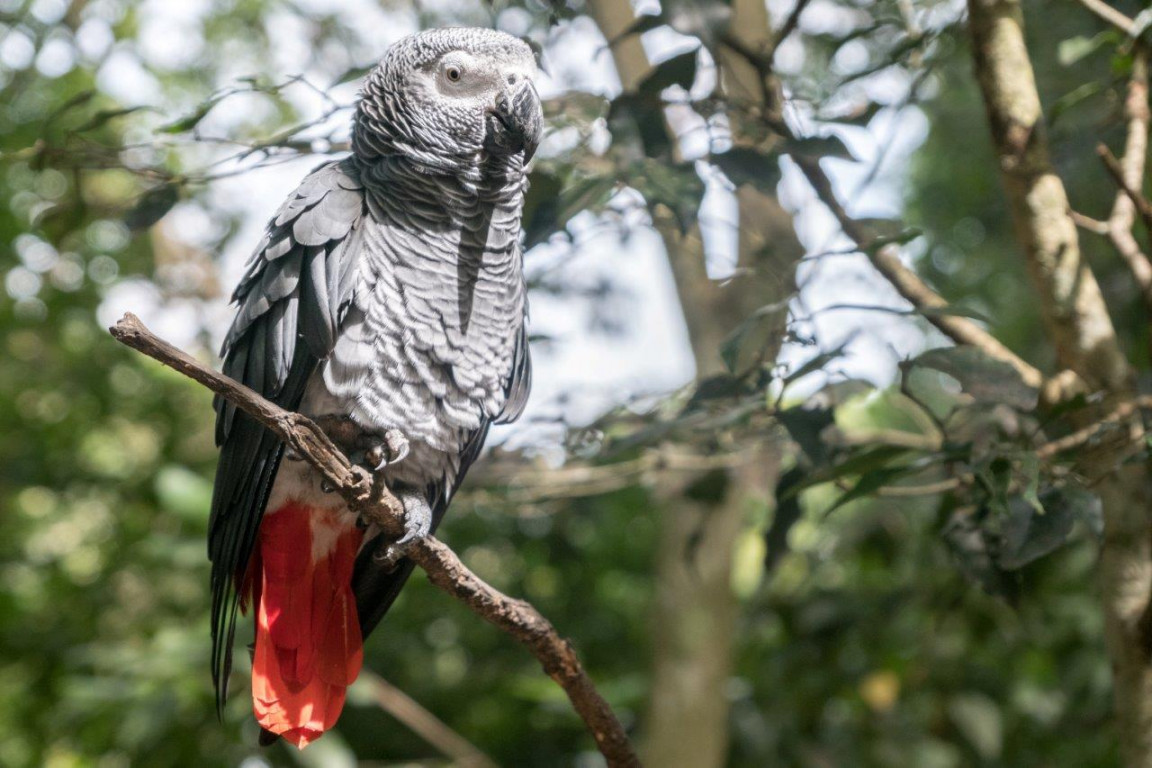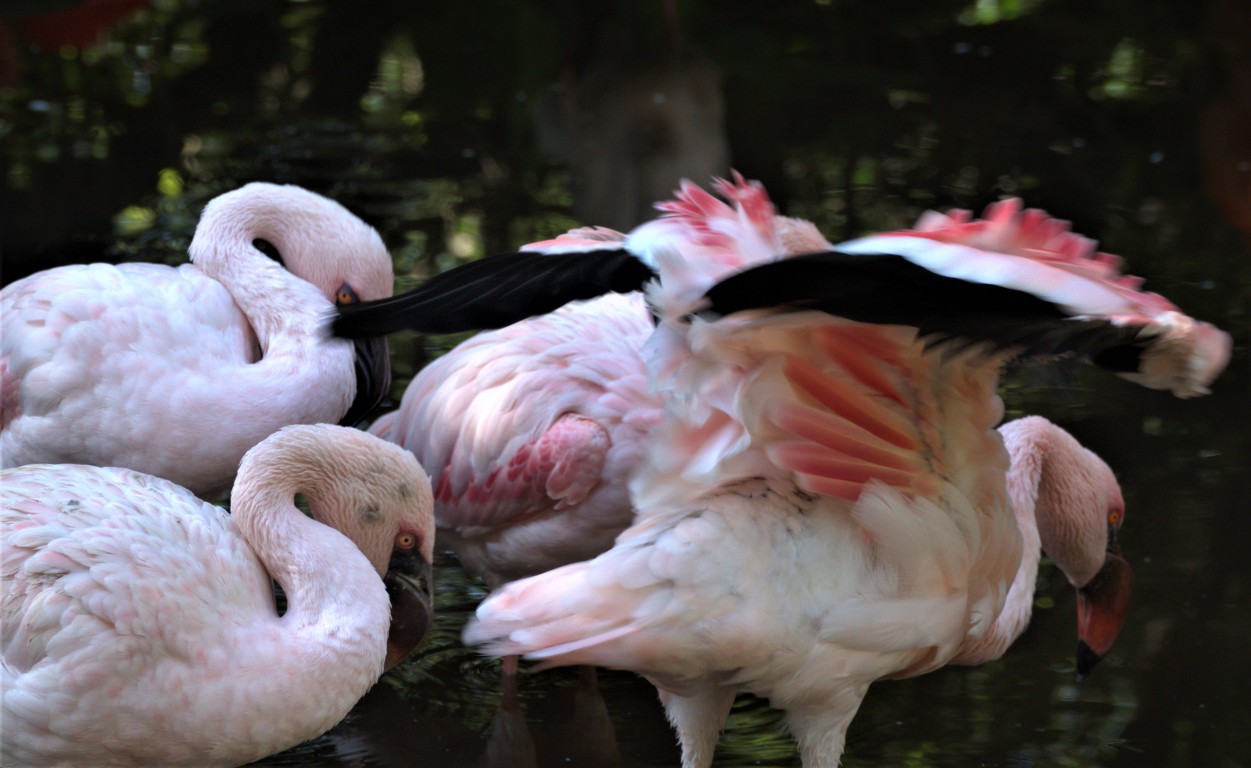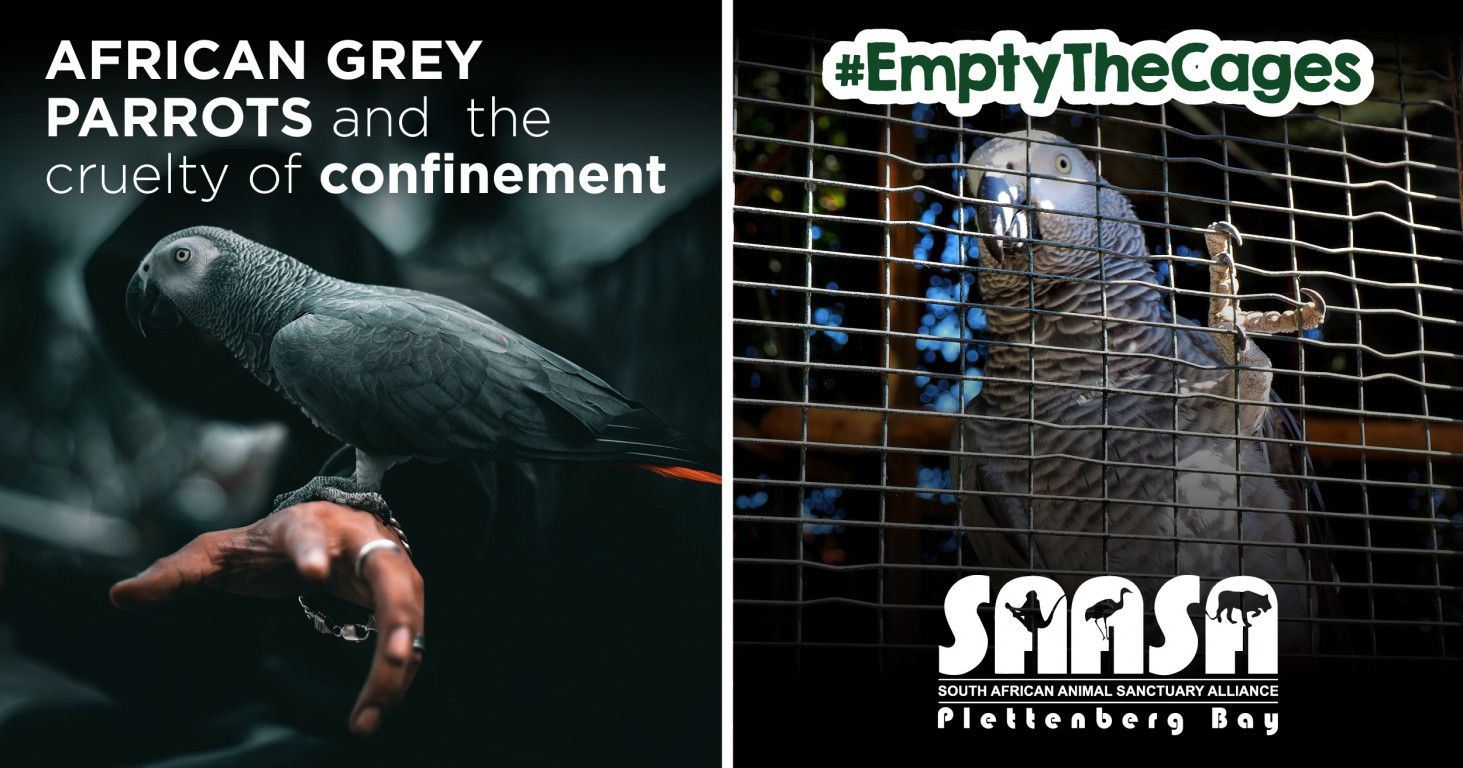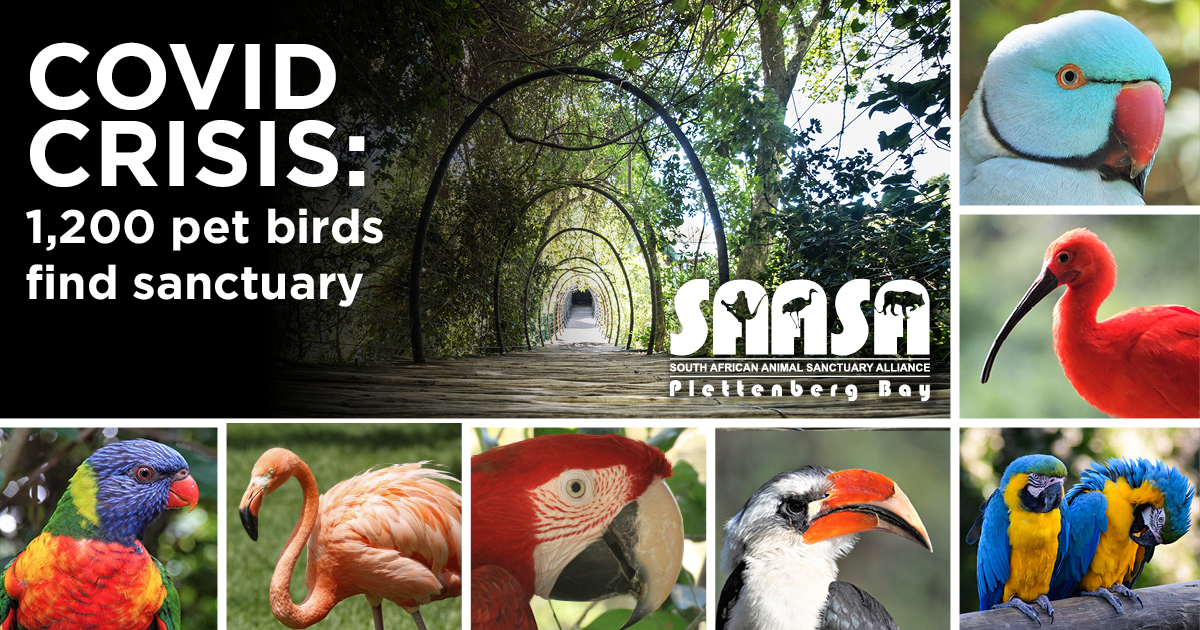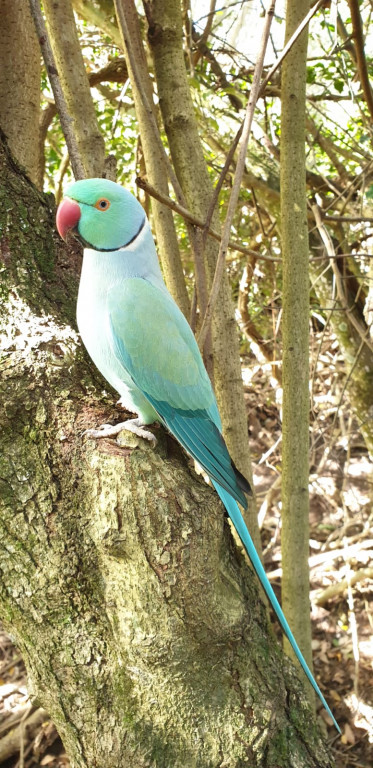African Greys parrots are amongst the world’s most popular avian pets but also the world’s most traded parrot. Trapping for the pet trade together with habitat destruction has had extremely severe consequences for the wild African Grey populations to such extend that these parrots have virtually been eliminated from the wild.
While greys have disappeared from their natural range, South Africa has developed the largest grey parrot breeding industry in the world. Today, 8 out of 10 captive bred African Greys parrots sold globally come from South Africa with a demand for export, according to the parrot breeders, as high as 100 000 birds each year. Now just imagine how many Grey parrots are caught up in the pet trade on home soil in this same country that breeds and export a hundred thousand Grey parrots a year.
The real ugly and heartbreaking side of this pet industry are the Greys confined to a small cage for the rest of their long lives; African Grey parrots can live for 40-60 years in captivity.
Many of these parrots eventually end up as unwanted pets due to different reasons; elderly people who took on a parrot in their younger years find themselves moving into smaller homes or retirement villages where these parrots are no longer welcome or even elderly people passing away leaving parrots behind, people emigrating from South Africa not able to take these birds with them and then the people who come to realise how unfair it is to confine a single parrot to a cage.
These are the people who contact Birds of Eden Bird Sanctuary in Plettenberg Bay, South Africa with the question: “Can you take my African grey parrot and give it a better life where it can fly and be with others of the same kind?”
Facts:
- Was listed on Appendix II of CITES (‘Convention on International Trade in Endangered Species’ of Wild Fauna and Flora is an international agreement between governments. Its aim is to ensure that international trade in specimens of wild animals and plants does not threaten their survival).
Appendix II imposed conditions on exporters to prevent unsustainable trade
• October 2, 2016 African Grey Parrots up listed to Appendix I of CITES following voting of delegates by secret ballot. South Africa voted against this up-listing to CITES I.
• CITES I mean no international trade except if not for commercial purposes. Trade cannot take place in wild specimens and international trade can only take place of captive bred species if breeders are registered with CITES Secretariat.
• One of the world’s most trafficked birds, world’s most trafficked parrot
• Some areas of DRC, numbers dropped to below 1% of population, Ghana population decline of 90%
• Congo and DRC still smugglers of wild caught birds – supplement the pet trade and as breeder birds for the pet trade
• Virtually extinct in Guinea, Rwanda, Burundi
• SA has largest African Grey parrot breeding industry in the world
• 8 of 10 African Greys traded globally are bred in SA
• the 1630 countrywide parrot breeders under the SA Parrot Breeders Association (not just breeders of African Greys), 156 have registered to date with the CITES Secretariat as African Grey Breeders for export.
• Parrot Breeders Association says they produces 67 000 chicks a year, 183 chicks daily and there is a demand for 100 000 to be exported.
• 90% of chicks bred in SA gets exported, (10 % remains in SA – almost 7000 pumped into the local pet industry yearly?)
• Since 1998, SA has exported more captive bred Greys annually than the rest of world combined
• Wild caught birds: at least 10% of birds die on planes, 24% die while being transported over long distance or when caught as fledglings, and between 10% and 40% die in the hands of local buyers. What this reveals is that approximately 50% of the birds die before they even reach the market.
• Wild-caught birds (especially illegal birds) are cheaper than captive-bred birds, so a wild-caught bird is quicker and easier to sell.
• Many breeders prefer wild-caught birds because they commence breeding almost immediately, whereas captive-bred birds only reach breeding age after four years. In order to increase yield, breeders often hand-raise fledglings that had been hatched in incubators, thereby robbing the birds of essential life skills handed down by parents. The result is a tame parrot, suitably conditioned for pet purposes, but of little use as a breeder – further increasing demand for wild-caught birds as breeding stock.
• Experts say the grey parrot is so smart that it can perform cognitive tasks at the level of human toddlers, which is one of the properties that makes them so attractive as pets, as well as their ability to mimic the human voice.
• Majority of pet parrots are kept alone in cages whereas in the wild they are social birds – hard-coded to seek the comfort and security of their peers, roosting in groups and flying in large flocks.
• Many pet grey parrots end up unwanted, misunderstood and socially maladjusted – often given away to friends, relatives or rescue centres or back to breeders.
• A grey parrot lives for 40-60 years in captivity, which is something many prospective owners don’t fully comprehend.
• Weekly, sometimes twice weekly requests are received by Birds of Eden for taking in single, two or even three African grey parrots at a time from owners looking to find a solution for their pets.
• The solution; building a very large landscaped enclosure dedicated specifically for African Grey Parrots, outside of the Birds of Eden Birds Sanctuary, where these ex-pet birds will enjoy the company of other Greys and have the ability to fly in a safe protected environment.
• This is where Birds of Eden need the assistance from everyone with a heart and feeling for these victims of the pet parrot industry, please support us in donating towards this cause. This project, must raise R600,000.00 to a) build an enclosure of 30m x 30m x 4,4m high, and b) to start a campaign to tackle the root cause, by lobbying, influencing legaslation and educating.
• Free-flight enclosure will be constructed of a multispan metal structure (similar to a hot house shape with domes) to withstand chewing by the parrots a concrete perimeter foundation to secure metal upright posts, stop burrowing predators and in order to secure welded mesh fencing and covered sheltered areas. . Also includes an introduction/adjustment cage for new arrivals.
• The birds will be under the care of Birds of Eden/South African Animal Sanctuary Alliance (SAASA) for the remainder of their lives. This is not intended as a breeding project and birds will never be traded again.



